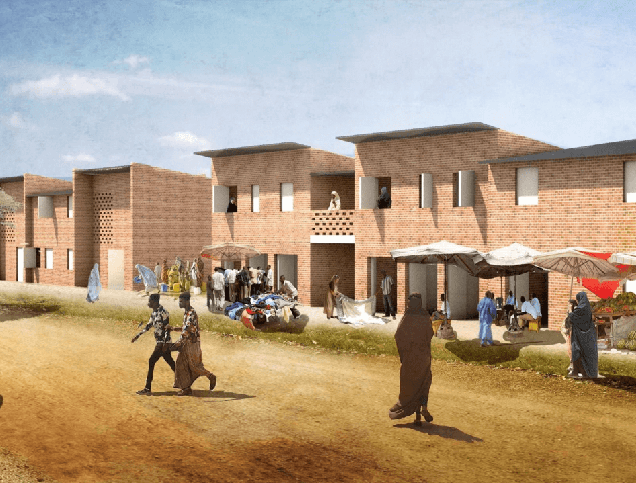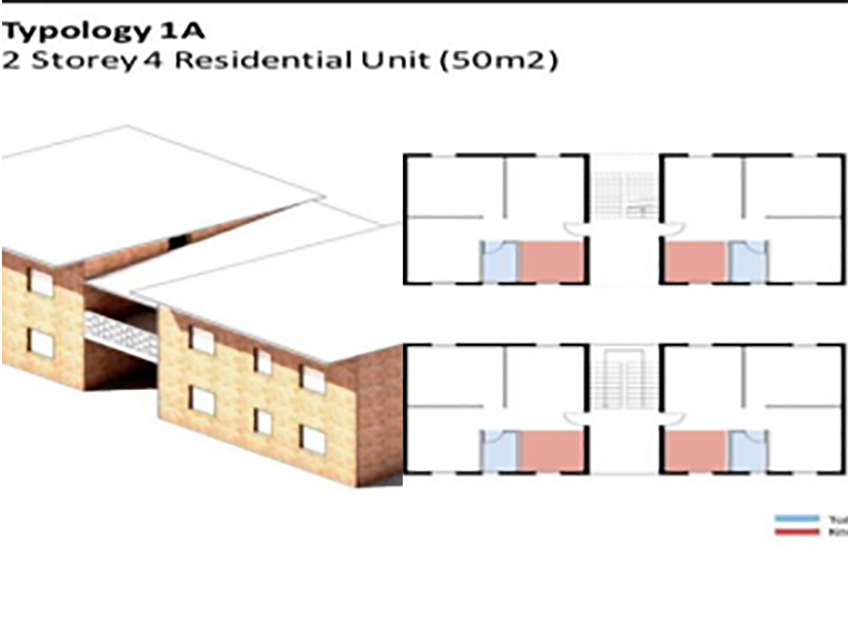
Close

Approach Words: Capacity Building, Inclusive City, Urban Livability
Public Policy Instruments: Organization, Physical Intervention, Planning, Regulatory
The Heliwaa Social Housing Project is a “self-sustaining”1 affordable housing initiative designed to house internally displaced communities in Mogadishu, Somalia.2 It includes upgrading nearby public facilities and constructing essential public facilities and spaces. The project is part of the EU-REINTEG programi which supports Somalia with durable solutions for managing and reintegrating mixed migration flows through sustainable housing strategies.3 ii
The project aims to increase the absorption capacity of areas receiving displaced populations, improve livelihood conditions in both return and departure areas,4 and create a conducive environment for the displaced peoples’ economic and social development.5

Title: Heliwaa Project Master Plan.
Source: Click Here

Title: Three-dimensional View of Heliwaa Housing Project.
Source: Click Here

Title: The Site Plan Was Reviewed by the SHERPA App.
Source: Click Here

Title: Two Story Building Typology of Four Residential Blocks.
Source: Click Here
To implement these objectives, the project includes three main components in the Heliwaa neighborhood:
Twenty percent of the social housing is reserved for households with physical or mental disabilities.8
The housing project is supported by an internal road network that serves the housing units, designed to align with the existing neighborhood layout.11 This will contribute to integration with the existing urban fabric and allow all Somalis, both men and women, to connect with neighborhood facilities.12 Street lighting will be installed in critical areas to enhance walkability through safe and accessible public spaces.13

Owner/Developer (Public)


Funder

The project adopted a participatory approach during the design phase. A housing workshop was led by the Benadir Regional Administration (BRA) and UN-Habitat, offering local authorities and community members a platform to contribute to the design scheme and area development plan.14 Additionally, UN-Habitat developed an app to guide sustainable housing and gather feedback on project processes at various scales (territory, neighborhood, household scale, etc.).15
The Benadir Regional Administration (BRA) initiated the project through the Durable Solutions Unit (DSU)iii and the Municipality of Mogadishu,16 in partnership with UN-Habitat,17 the European Union and UNHCR Somalia, is responsible for addressing the immediate needs of vulnerable IDPs and host communities affected by the conflict and drought.18 The UN-Habitat and Benadir Regional Administration will implement the project components; however, the European Union funds the project.19 It is worth noting that this housing scheme is designed to be replicable in different neighborhoods in Mogadishu.20
Project Link
Endnotes
References